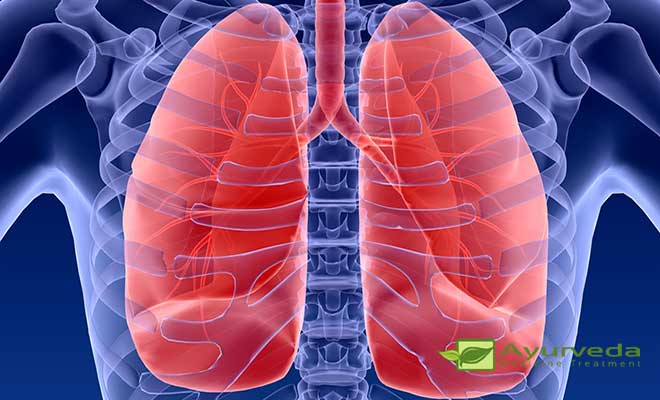
Pleurisy refers to that condition when the covering membrane over the lungs gets inflamed. The membrane is known as pleura. The nomenclature of this dysfunction is derived from the membrane which is affected during this ailment.
Pleurisy Classification
Generally, pleurisy is classified into three categories. The classification is based on the effects that emanate as a result of the inflammation. These classifications are as ‘Purulent pleurisy‘; ‘Effusion Pleurisy‘; and ‘Dry Pleurisy‘.
‘Purulent pleurisy‘
‘Purulent pleurisy‘ is characterised by pus formation in the affected section of the lungs.
‘Effusion Pleurisy‘
A person suffers from ‘Effusion Pleurisy‘ when the following two characteristics appear: excessive fluid oozes out during inflammation; and the fluid gets deposited in the pleural cavity.
‘Dry Pleurisy‘
‘Dry Pleurisy‘ is characterised by deposits of fibrous tissue or fibres at the affected portion.
Symptoms of Pleurisy
The patient may be uncomfortable while sleeping owing to the inflammation. The pleura inflammation syndrome is also accompanied by all or any of the following symptoms: breathing problems, rise in body temperature, coughing and chest pain especially even while making any simple movements.
Ayurvedic Definition of Pleurisy
This syndrome is termed as Parshva shula in Ayurveda.
According to Ayurvedic principles, Pleurisy is caused due to the aggravation of Kapha and Vayu Doshas.
Cure Constipation
It has been generally found that Pleurisy patients suffer from constipation which in turn causes the person to lose appetite.
In such cases, the patients should be made to cure constipation in the first place. He/she must be given papaya to get early relief from constipation. Once constipation is taken care of, the person will experience appetite. The person concerned would also find taste in the simple diet he/she is tendered.
Dietary Regimen
The patient should regularly have potato, cabbage, cauliflower, lady’s finger, brinjal, patola, and butter gourd.
What not to eat
- Such persons must avoid having the following items:
- Icy food stuffs;
- Any types of fried items;
- Avoid all items like the green banana which cause constipation.
Other important points
- Though the patient should have adequate rest, yet he/she should not sleep during the daytime especially in the wintry season.
- Her/she must abstain from sex indulgence;
- Similarly, don’t do any hard physical labour;
- Stay away from acute changes in temperatures.
Ayurvedic Treatment
Ayurveda has medications for each of the three types of Pleurisy.
The Ayurvedic medications for the patients suffering from Pleurisy are Suvarna vasanta malati, Rasa sindoora and Naradiya Lakshmivilas.
There is also a common Ayurvedic drug for the Pleurisy patients. Shringa bhasma is this medication.
Suvarna Vasanta Malati
Suvarna vasanta malati is recommended for patients who suffer from Pleurisy accompanied by pus formation and experiences fever and body temperature.
The patient should be given a combination of Rasa Sindoora and Suvarna vasanta malati mixed with honey.
The Dose : Take 0.125 gram of each drug and mix it with a teaspoonful of honey. The patient should have the concoction four times daily.
Rasa Sindoora
Rasa sindoora is a specially prepared medication. The drug is prepared from typically purified (as per Ayurvedic norms) and sulphur and mercury. The purification process is done with the help of fire. As a result, both sulphur and mercury lose their toxic qualities and transform into therapeutic substances.
Note of caution : Rasa sindoora should not be consumed for a prolonged period. This medication should be discontinued immediately after pain and cough subsides.
The patient should then, however, continue with Naradiya Lakshmivilas and Shringa Bhasma.
Naradia Lakshmivilas
Naradiya Lakshmivilas along with Shringa Bhasma is prescribed for patients suffering from Pleurisy accompanied by infusion.
The Dose : The patient should be tendered 0.250 gram of Naradiya Lakshmivilas mixed with half a gram of Shringa Bhasma four times daily.
Note : The patient should also take Rasa sindoora if the patient suffers from phlegm mixed cough.
Shringa Bhasma
Shringa Bhasma is prepared from deer’s horn which is first cut into minute pieces. They are then processed. Next, these pieces are burnt. Once they turn into ashes, the fine powder is used to prepare the medication.
The Dose : The dose is determined according to the seriousness of the syndrome and the acute nature of the ailment. The powder is mixed with honey and then given to the patient. The quantity of the burnt deer horn powder is 0.250 gram.

Leave a Reply